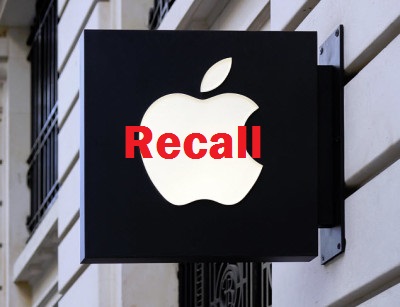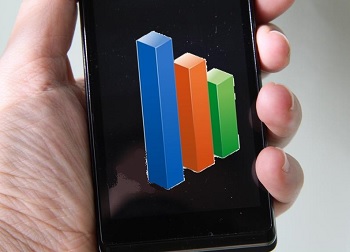A massive return program has just been launched by the iPhone maker for AC adapters sold in many countries.
A tremendous Apple recall has now swept through a large handful of countries, initiating a return program for all the adapters it has sold for over a decade, many of which have gone back as far as 2003.
This return program has followed closely on the heels of a similar recall that was issued by Microsoft.
Recently, Microsoft had to issue a call back for many of its AC adapters for the Surface line of devices. The Apple recall, however, is notably bigger as it is for gadgets going back well over a decade which are meant for devices that have seen far greater sales. The affected adapters are those that have been constructed with swappable prongs. They are the mobile devices that can be removed from the user’s charger and are included with the purchase of many of the different iPhone, iPad, iPod and Mac devices.
This Apple recall will not affect the included chargers and adapters that were sold in the United States.
 That said, it is quite a widespread recall of Apple adapters, as it will affect those sold in Continental Europe, Australia, New Zealand, South Korea, Brazil and Argentina. It will also impact the adapters that had been included in the world travel kit and that have been sold around the globe for many years. It is in those packages that the recalled Apple adapters are most likely to find their way into the hands of Americans.
That said, it is quite a widespread recall of Apple adapters, as it will affect those sold in Continental Europe, Australia, New Zealand, South Korea, Brazil and Argentina. It will also impact the adapters that had been included in the world travel kit and that have been sold around the globe for many years. It is in those packages that the recalled Apple adapters are most likely to find their way into the hands of Americans.
The recall program page that has been created for this purpose has indicated that it is a voluntary return program. It also indicated that the issue in question is that “in very rare cases, affected Apple two-prong wall plug adapters may break and create a risk of electrical shock if touched.”
For those with products that qualify for the Apple recall, an exchange of the old product for a new one that does not cause the risk of a rare shock. This exchange is free for the customer and can be done either online, by contacting the company’s customer support, or by heading over to an Apple Store where it can be done in person.
Predictions with regards to who would win the Spanish, Israeli and U.K. elections were way off.
During the most recent elections in the United Kingdom, Spain and Israel, pollsters called the outcomes quite firmly and yet they were incredibly wrong and the belief is that the same mistakes may be headed to the U.S. due to mobile technology and the lack of understanding of the Millennial lifestyle.
Still, American pollsters are trying their hardest to avoid those mistakes during the 2016 campaign.
According to the president of the American Association for Public Opinion Research, Mollyann Brodie, who is also responsible for overseeing polling at the Kaiser Family Foundation, “There are a lot of people working hard to make sure similar mis-steps don’t happen here.” However, she and other experts in the field – agree that the pollsters across the United States are currently up against some extremely complicated challenges with regards to their methodologies. These challenges are about as tough as they’ve been since mobile technology first hit the mainstream.
Millennials use their mobile technology to screen calls, throwing off the balance of understanding of voters.
 People in the Millennial generation don’t feel the urgency to pick up the phone when it rings, as has been the case in previous generations. When their mobile technology device rings, they use caller-ID to see who is on the other end, and they feel no obligation to pick up when it’s someone they don’t know, don’t want to talk to, or when they’re simply too busy to pick up.
People in the Millennial generation don’t feel the urgency to pick up the phone when it rings, as has been the case in previous generations. When their mobile technology device rings, they use caller-ID to see who is on the other end, and they feel no obligation to pick up when it’s someone they don’t know, don’t want to talk to, or when they’re simply too busy to pick up.
This, combined with the declining accuracy of the “likely voter” models and swindling budgets have caused sample sizes to shrink dramatically. For this reason, the polls, this year, are facing considerable criticism. There is considerable risk that the predictions in the United States are as inaccurate as they have been elsewhere around the world, and that pollsters could find themselves feeling rather red-faced when the true outcomes are revealed.
A prime example of this challenge occurred when the chief strategist for Hillary Clinton, Joel Beneson tweeted “Seriously CNN?” in response to a poll result the network released, which showed the former secretary of state falling behind Bernie Sanders in Iowa (43-51). The reason for the lack of faith in the figures is that it was discovered that the sample used by CNN was made up primarily of men, and consisted of only slightly over 300 people – which is barely representative of a general population.
 That said, it is quite a widespread recall of Apple adapters, as it will affect those sold in Continental Europe, Australia, New Zealand, South Korea, Brazil and Argentina. It will also impact the adapters that had been included in the world travel kit and that have been sold around the globe for many years. It is in those packages that the recalled Apple adapters are most likely to find their way into the hands of Americans.
That said, it is quite a widespread recall of Apple adapters, as it will affect those sold in Continental Europe, Australia, New Zealand, South Korea, Brazil and Argentina. It will also impact the adapters that had been included in the world travel kit and that have been sold around the globe for many years. It is in those packages that the recalled Apple adapters are most likely to find their way into the hands of Americans.
 People in the
People in the 